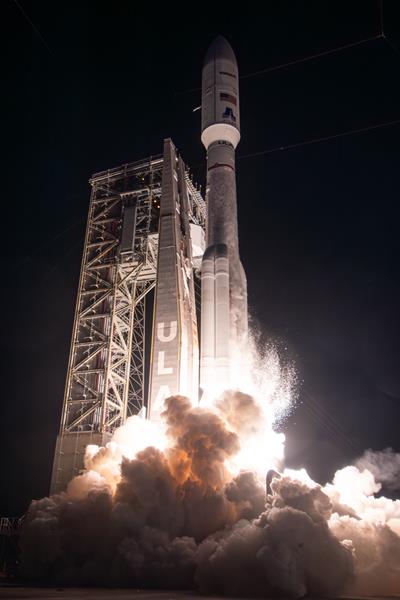
The second of the ViaSat-3 satellites is safely on its way to geosynchronous orbit. ViaSat-3 F2 successfully launched on a ULA Atlas V551 from Cape Canaveral Space Force Station in Florida late Thursday night.
This cutting-edge satellite will significantly scale our network’s performance and capacity, enabling exciting new connectivity services and supporting our customers’ growing needs across the Americas.
– Mark Dankberg, Chairman and CEO of Viasat
ViaSat-3 F2 is slated to deliver Ka-band capacity over the Americas region replacing the planned capacity from ViaSat-3 F1. That satellite launched in May 2023 before suffering problems with the deployment of its primary reflector. Ultimately the company salvaged 10% of the capacity, and activated it for service in the Western United States and over the Pacific Ocean, providing much needed aero coverage for flights between the mainland and Hawaii.
n.b. – Viasat covered food and hotel costs for PaxEx.Aero to attend the first two attempted launch dates. As always, opinions expressed remain our own.
Over the next several days the satellite will deploy its solar arrays as it continues towards its final geostationary orbital position. Once on station the final deployments, including its reflectors, will occur, followed by extensive in-orbit testing and network integration. The company anticipates service entry in early 2026.
Speaking in Cocoa Beach last week, shortly before the first of two launch scrubs, CEO Mark Dankberg was exceptionally confident, both in the efforts the company put in to ensuring it would not see a repeat of the reflector deployment problem (“We did incredible amounts of analysis on what went wrong. So we built things to make sure that doesn’t happen again, and then if, even if it does, the reflector will deploy. That’s about the best I think anybody’s gonna do.”) and in the overall trajectory of the business with ViaSat-3 launches once again underway.

He was also hamstrung slightly by SEC rules in terms of what he could say (earnings turned out pretty well; commercial aero continues to perform). But he was willing to talk big picture about the future of inflight connectivity and how Viasat plans to compete against significant inroads from new competitors.
Little of the conversation came as a surprise, but there’s still one portion of Viasat’s strategy that raises critical questions.
There’s more to the story… Dig deeper with a PaxEx.Aero Premium Subscription
A favor to ask while you're here...
Did you enjoy the content? Or learn something useful? Or generally just think this is the type of story you'd like to see more of? Consider supporting the site through a donation (any amount helps). It helps keep me independent and avoiding the credit card schlock.

Leave a Reply